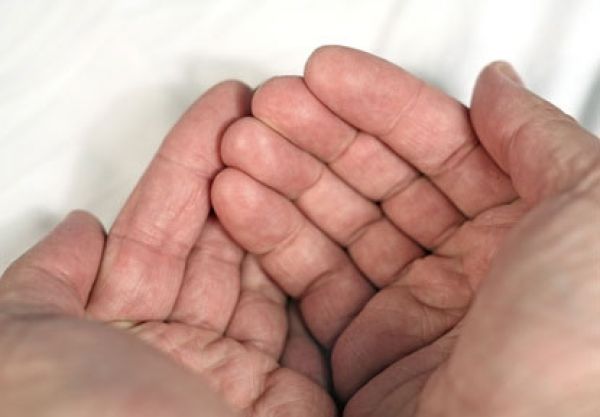
Well it seems the last fortress of denial is starting to see some real estate trouble with the Daily Telegraph reporting recently on Sydney’s market.
Sydney’s great property divide is being turned on its head, with the wealthy Eastern Suburbs suffering a shock 15 per cent slump in property prices, while values in the city’s west continue to soar.
Property monitors and analysts are stunned by the sharp reversal in fortunes in traditional real estate hot spots, claiming the nine-month plunge has wiped billions from the collective wealth of the city’s richest homeowners.
And it could be just the start.
Property analyst Jason Anderson, of MacroPlan Australia, believes the Eastern Suburbs could face a further 5 per cent decline in values in the next quarter alone if sentiment failed to turn around and first-home buyers continue to sit on the sidelines.
Such an additional fall would take the market correction to beyond 20 per cent from the inflated peaks reached last year, erasing the majority of gains the Eastern Suburbs recorded in the mini property boom post the Global Financial Crisis.
….
All financial indicators point to a continued softening in the Sydney property market, following similar downward trends in Brisbane (down 6 per cent in a year) and Perth (down 4.1 per cent), while Melbourne has seen a 20 per cent fall in sale volumes.
The most prominent indicator is new housing finance which is now 30 per cent below levels reached in the first-home buyers frenzy of 2009. This reluctance to buy is also shown in the numbers of first-home buyers looking for property – only about 96,000, compared to 190,000 at auctions in late 2009.
Housing sales have also tumbled. Ray White Real Estate said the value of the houses it sold in March was 16 per cent down on March 2010 figures. Agencies also believe the number of houses on the market is at the highest level ever recorded in the city.
“There was some feeling at the end of last year that all we needed for 2011 was for no interest rate rises and prices should increase. That optimism has faded somewhat,” Mr Anderson said.
“Everyone seems to be a little bearish. I thought the return of the first-home buyers would have happened by now, but it now looks like they will wait till the December quarter. So the bottom is a little bit of a way off yet.”
Others maybe shocked to hear that Sydney is now showing signs of real estate weakness, but I am unsure why. For some reason property bulls seem to have got it in their heads that even if everyone else has left the market investors can keep it going by themselves. They seem to be of the belief that this is a choice that investors can make, and if they don’t sell then prices will not fall.
But that line of thinking has a big problem. For a large number of property investors those properties are their retirement fund. As the Unconventional Economist mentioned in a post back in February.
Despite representing only 25% of Australia’s population, the Baby Boomers collectively hold 45% of owner-occupied dwellings and 51% of other dwellings (i.e. investment properties and holiday homes). However, since the older Boomer cohort (55-64 year-olds) are relatively small (accounting for 11% of the population), they hold a smaller (20%) share of Australia’s housing assets. By contrast, the younger Boomers (45-54 year-olds) hold 26% of the housing assets, reflecting their larger (14%) share of the population.
But that first 11% have a problem. I will let news.com.au explain what it is.
Rising living costs also are worrying employed people nearing retirement.
Big super fund First State Super reported last month that 70 per cent of its members approaching retirement are concerned about their future.
Perhaps because average superannuation payouts on retirement are woefully inadequate — $63,000 for women and $136,000 for men.
Millions of Australians have hardly any superannuation at all.
The National Centre for Social and Economic Modelling says half of all women between 45 and 59 have less than $8000.
Many super funds and financial advisers say $750,000 to $1 million is required to fund a modest or comfortable lifestyle in retirement.
The latest Westpac ASFA Retirement Standard Index says a couple looking for a comfortable retirement need $53,729 a year, while those seeking a modest lifestyle need $30,557 a year.
Financial counsellors have quick rules of thumb to work out what a retiree needs — multiply the annual income you want in retirement by 17 if retiring about age 55, multiply by 15 for a retirement age of 60, and by 13 if you are going to work until 65.
Many people approaching retirement are not making the extra contributions they need to ensure a healthy super balance.
Quite simply real estate (and in a smaller proportion equities) is the superannuation of 55+ baby boomers. The reason they own so many properties is because they own so little of anything else. For this cohort there is little choice to sell or not. If they want to have a decent retirement they need to unload their portfolio.
This starts now!
In my opinion the reason we are seeing increasing numbers of properties on the market is the beginning of this dynamic, and therefore if you are waiting for the number of houses on the market to fall you are going to be disappointed until at least 2021.
I never offer advice, but if I was 55, hoping to retire in the next decade and I owned property then I would seriously be considering the consequences of the decade of boomers ahead of me on my property portfolio’s value.
To everyone else….. well you can make up your own minds.